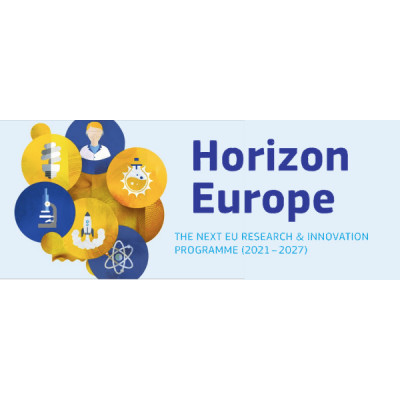Share
Print

Call Updates
Aug 31, 2022 3:52:39 PM
CALL UPDATE: FLASH CALL INFO
An overview of the evaluation results (flash call info) is now available under the "Topic conditions and documents" section on the topic page.
Jun 1, 2022 9:41:15 AM
CALL UPDATE: PROPOSAL NUMBERS
Call HORIZON-JTI-CLEANH2-2022-1 has closed on the 31 May 2022 17:00:00 Brussels time.
79 proposals have been submitted.
The breakdown per topic is:
RENEWABLE HYDROGEN PRODUCTION
Evaluation results are expected to be communicated at the end of August 2022.
Mar 31, 2022 10:16:55 AM
The submission session is now available for: HORIZON-JTI-CLEANH2-2022-01-02(HORIZON-JU-RIA)
Development and validation of pressurised high temperature steam electrolysis stacks (Proton Conducting Ceramic Electrolysis)
TOPIC ID: HORIZON-JTI-CLEANH2-2022-01-02
Programme: Horizon Europe Framework Programme (HORIZON)
Call: HORIZON-JTI-CLEANH2-2022 (HORIZON-JTI-CLEANH2-2022-1)
Type of action: HORIZON-JU-RIA HORIZON JU Research and Innovation Actions
Type of MGA: HORIZON Action Grant Budget-Based [HORIZON-AG]
Deadline model: single-stage
Planned opening date: 31 March 2022
Deadline date: 31 May 2022 17:00:00 Brussels time
Hydrogen is stored, transported or used pressurised with variable pressures depending on user cases, e.g., between 7 and 70 bar for various industrial applications and grid injection, up to 200 bar for filling gas cylinders, as well as up to 350 and 700 bar in refuelling stations. Hydrogen compression requires energy, which negatively affects overall process efficiency and hydrogen molecule final cost. Pressurised electrolysis therefore has the potential to provide an efficient solution for delivery of pressurised hydrogen at reduced cost. It also enables a low emissions form of hydrogen production, including down to zero emissions if powered solely by renewables.
It is expected that this topic will provide breakthrough and game changing technologies for energy efficient pressurised hydrogen production using Proton Conducting Ceramic Electrolysis (PCCEL) and contributing to the overall objective of the SRIA of the Clean Hydrogen JU, namely the hydrogen production cost of 3 €/kg by 2030.
The project outcomes will pave the way for the deployment of pressurised hydrogen production units based on proton conducting electrolyte to accelerate uptake in one or more applications (for example: injection into the gas grid, onsite production at HRS, feedstock for industry, such as steel plants, refineries, chemical plants).
The project results are expected to contribute to all of the following expected outcomes:
Project results are expected to contribute to all of the following objectives of the Clean Hydrogen JU SRIA:
For High Temperature Steam Electrolysis (HTSE), the Protonic Conducting Ceramic Electrolysis (PCCEL) operating at 500-700 °C can be a promising solution. PCCEL technology has emerged over the past decade with strong development in materials and cells research, while activities towards stack and system development have been marginal. There have been previous FCH JU projects dedicated to pressurised HTSE at small scale for PCCEL. For instance, pressurised PCCEL electrolysis cells with tubular geometry are showing high Faradaic efficiency (> 90%) and stable performance at 600°C up to 3 bar. These previous activities highlighted the needs for more research efforts directed to the optimisation of components, cells and stacks to improve current density and stability in pressurised operation for both technologies. Furthermore, additional efforts should focus on system integration and on defining optimal boundary operations for dedicated user cases in order to maximise the efficiency of the integrated scenarios (e.g. taking into account thermal integration and possible side stream products). This opens for the development of novel and/or improved systems concepts, where the benefits of pressurised electrolysis should be leveraged for deployment in large-scale centralised systems with economies of scale, hydrogen distribution to end uses, as well as distributed systems located at demand centres.
Proposals for this topic should set out a credible pathway to contribute to the development and validation of pressurised PCCEL with technological breakthroughs aiming at designing and operating a stack at an optimal pressure with eventual assistance of a downstream compression process to reach higher delivery pressure. Electrochemical compression in the stack can also be considered. To tackle these challenges, the proposals should focus on system and stack design, as well as fabrication, assembly and testing of stack in the conditions suitable for the relevant business cases as follows:
Consortia are expected to build on the expertise from the European research and industrial community to ensure broad impact by addressing several of the aforementioned items.
Proposals should demonstrate how they go beyond the ambition of WINNER and GAMER projects[1] and be complementary to them.
Proposals are expected to address sustainability and circularity aspects.
Activities developing test protocols and procedures for the performance and durability assessment of electrolysers and fuel cell components proposals should foresee a collaboration mechanism with JRC (see section 2.2.4.3 "Collaboration with JRC"), in order to support EU-wide harmonisation. Test activities should adopt the already published EU harmonised testing protocols to benchmark performance and quantify progress at programme level.
Activities are expected to start at TRL 2 and achieve TRL 4 by the end of the project.
The conditions related to this topic are provided in the chapter 2.2.3.2 of the Clean Hydrogen JU 2022 Annual Work Plan and in the General Annexes to the Horizon Europe Work Programme 2021–2022 which apply mutatis mutandis.
[1]https://www.clean-hydrogen.europa.eu/projects-repository_en
